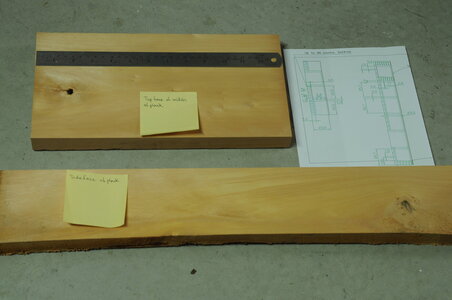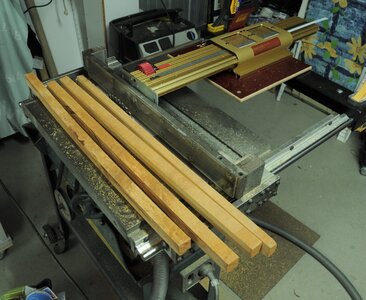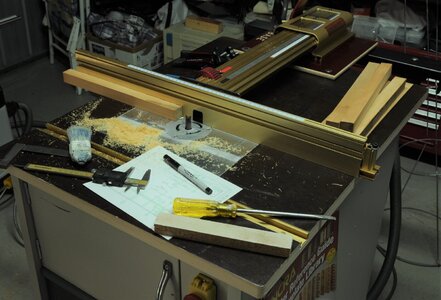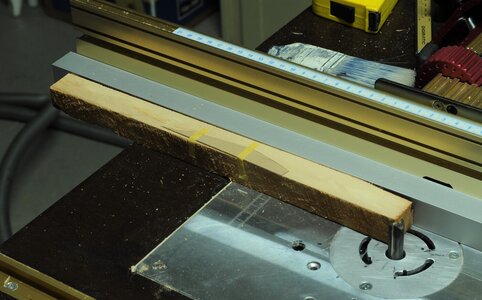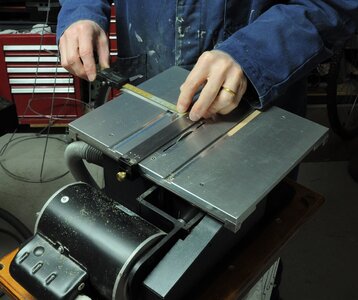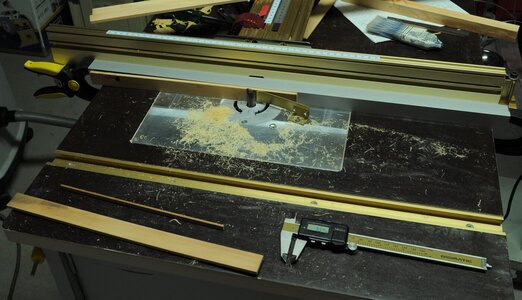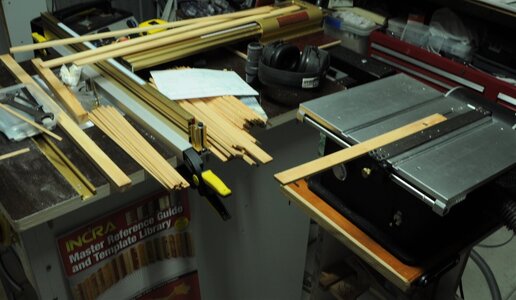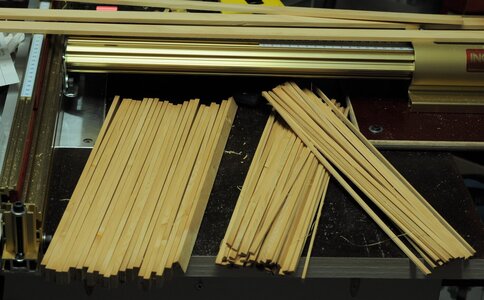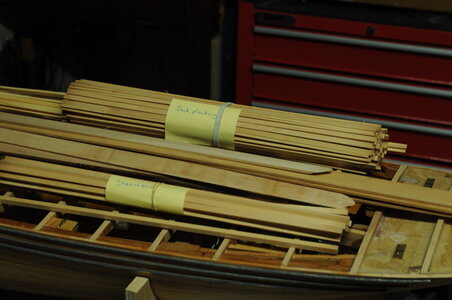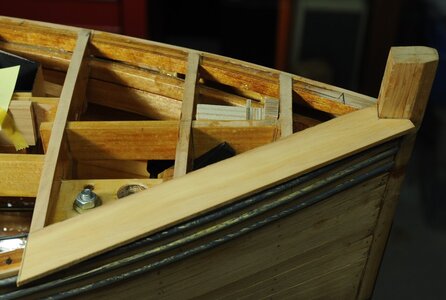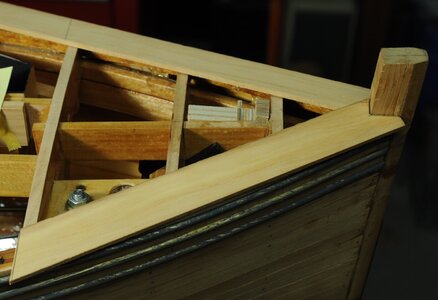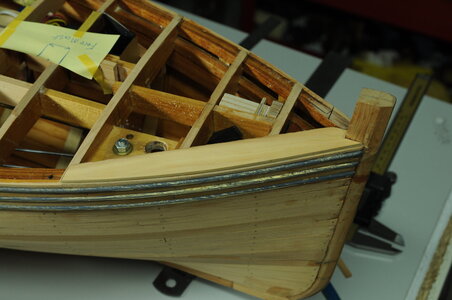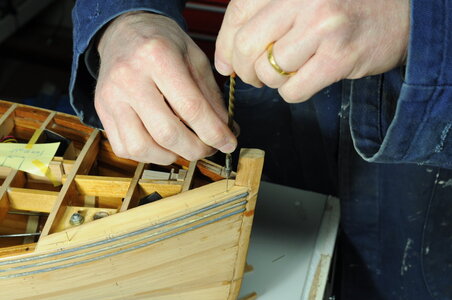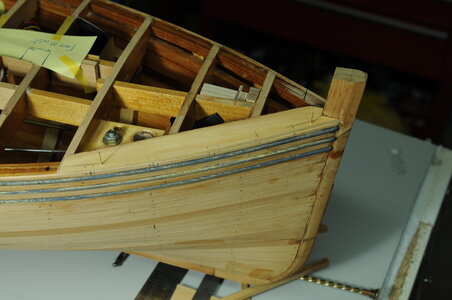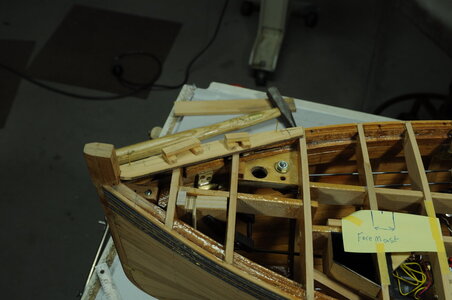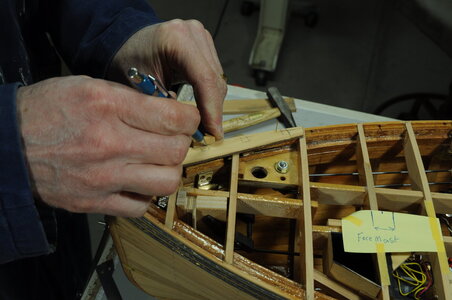Part 21.
Hello once again, at last some more progress, yes the Glacier has moved.
After making the material in the last part.
I had decided to fit the “Binn irons” before starting work on the bulwarks and deck planking thinking it would be easier to to in this order.
At the time the idea of making Brass “D” section for the “Binn Irons” seemed like a good one, it fitted in with the overall build, though I would have to admit to not really thinking it through, as I found out it takes a long time and a lot of work to do this in metal.
After making the “D” section material I noticed there was quite a twist in it and that it was quite “springy” making it difficult to bend to shape leading me to anneal the brass this improved things a lot.
View attachment 245629
I straightened the “D” section as best as I could. Then using the drilling jig drilled a series of holes for brass pins, getting the right size hole took a bit of fiddling a light press fit was what I was aiming for.
View attachment 245630
View attachment 245631
I made lots of pins by hand, sharpening one end with a file, 2 different lengths were made, this was a good after work job not requiring much thought.
View attachment 245632
I set the Vernia caliper to the required depth then cut the .8mm brass wire, they were pretty consistent in length.
View attachment 245633
The “Binn irons” were roughly shaped by hand to get them close to the hull shape before starting to fit them, they were cleaned with thinner then etch primed just using a brush instead of spraying.
View attachment 245636
Once that was done I installed the pins so they are flush with the flat side of the “D”.
View attachment 245635
Next came the hard part, final installation with glue and pins what could go wrong!!! The biggest difficulty being getting a “fair” run when looking along the length of the boat this problem I didn’t really solve, there is a slight wobble when sighted along the length of the boat, all a bit late to rectify once pinned and glued in position. I resisted the urge to remove the “Binn iron” and try again fearing that I would do more damage than good, at present I am running with the thought “it adds character” the error only being seen when sighting down the length of the hull.
View attachment 245637
View attachment 245638
View attachment 245639
View attachment 245640
View attachment 245641
View attachment 245642
View attachment 245643
Thank you for looking in and my apologies for such a lengthy gap between posts, although this is more like the pace this build progresses at.
Cheers,
Stephen.





